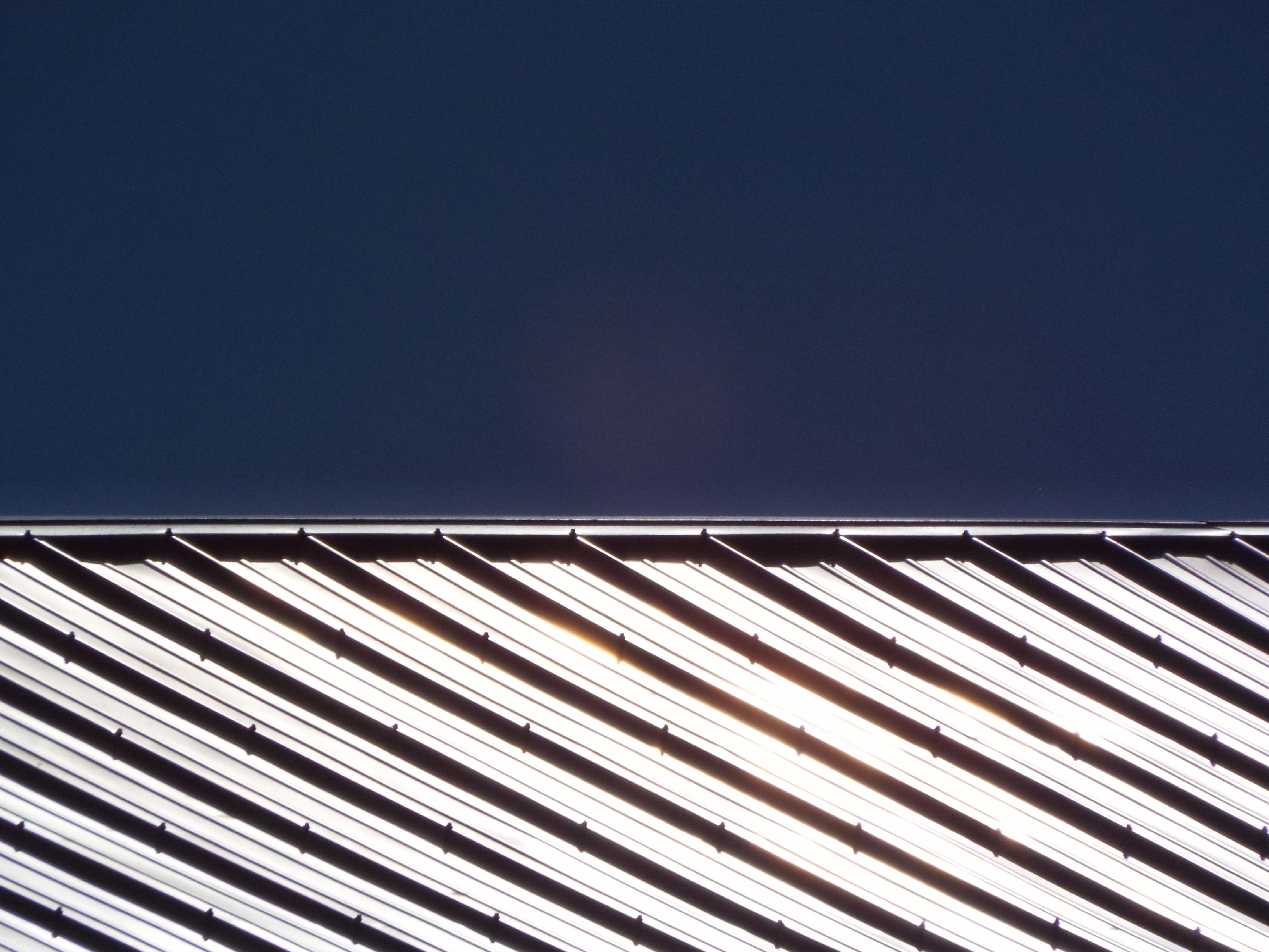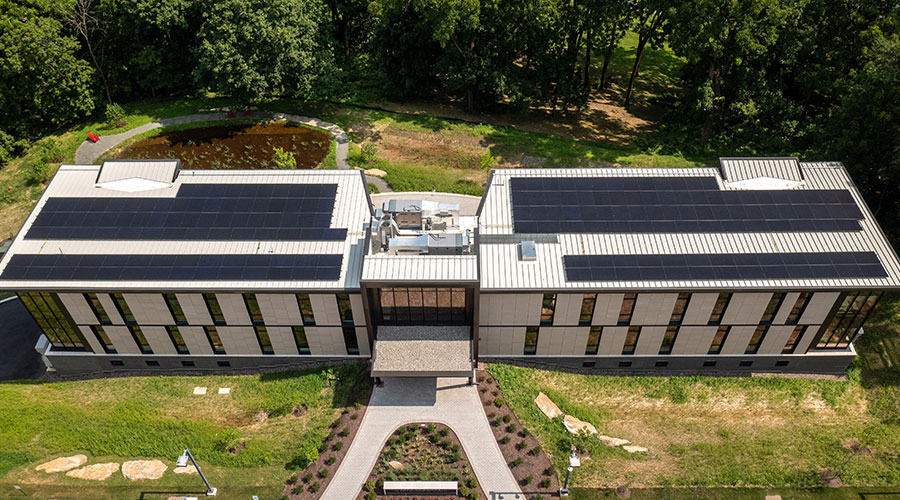Be Cool, Pay Less
With a proven track record and many system choices, cool roofs offer energy and environmental benefits that are hard to ignore.
Ask an expert to define cool roof, and the explanation probably includes two terms: “reflectivity” and “emissivity.” Any roof that can boast strong performance in those two areas — that is, the ability to reflect sunlight off a facility’s rooftop while minimizing roof temperature — is a good candidate for the designation.
“A cool roof is any roof with those reflective and emissive properties that respectively help improve the energy efficiency of the building envelope and mitigate the urban heat island effect,” says Greg Crawford, executive director of the Cool Metal Roofing Coalition.
Beyond that, however, the sky’s the limit when it comes to choices of systems that qualify as cool roofs; the idea that opting for a cool roof limits you to a specific type of product is a common misunderstanding.
“Having decided on a given roofing system, there are options for both hot roofs and cool roofs,” says Hashem Akbari, group leader, heat island group, Lawrence Berkeley National Laboratory.
“You can get a cool roof in almost any material you might be considering,” says Andre Desjarlais, group leader, Building Envelope Research Program, Oak Ridge National Laboratory.
Good for the bottom line
From a bottom-line perspective, the major benefit of a cool roof is its potential to deliver energy savings. By reducing the absorption of solar heat through the roof, a cool roof lowers a facility’s cooling load and the energy required to power air conditioning.
“People may not think of the roof as an energy-saving opportunity,” says Steve Ryan, program manager, roof products, Energy Star. “There has been an Energy Star label for roof parts for five or six years, and still a lot of people don’t know about it. But this is an opportunity to lower your peak energy usage and to decrease your bills.”
How much savings can a facility executive expect a cool roof to deliver?
“The message is somewhat complicated,” says Bill Good, executive vice president, National Roofing Contractors Association. “How much you can save depends on a lot of factors, including geography, materials and whether there are areas where heating and cooling are escaping from the building.”
A thorough analysis of possible savings will take into account the amount of insulation in the facility and the price of energy in the area. The short story, however, is that in areas where there is less need for air conditioning and more demand for heating, the energy-saving benefits of a cool roof are not as great.
“You definitely save more in a warmer climate,” says Ryan. The weather is one reason; another factor is that buildings in the south tend to have less insulation, says Ryan.
“In a hot climate, a cool roof probably saves 10 cents per square foot per year,” says Akbari. “In the northern part of the country, it is less. The savings is probably more like 3 to 5 cents per square foot. But, still, there is a savings.”
Good for the environment
Energy savings are not the only reason to opt for a cool roof. Indeed, the researchers who pioneered the technology in the 1970s were motivated primarily not by the cost savings cool roofs bring for facility owners, but by the significant environmental benefits they offer for cities where they are widely used.
“When you use a cool roof you cool the city,” says Art Rosenfeld, commissioner of the California Energy Commission.
Rosenfeld pioneered the study of urban heat islands — a phenomenon in which the air temperature in and around urban areas is raised by 6 to 8 degrees Fahrenheit, primarily as a result of the prevalence of heat-retaining surfaces like dark roofs and asphalt streets. Because of their high emissivity and their ability to maintain low surface temperature, cool roofs have a well-documented ability to combat the urban heat island effect.
Urban heat islands are associated with increased pollution and cooling costs, negative health effects, and even decreased workplace productivity because of the impact of poor air quality. “Ozone — call it smog — is extremely temperature dependent,” says Rosenfeld. “In Los Angeles, when the average daily temperature is 72 or below, there is ozone in the air but there are no smog episodes. When it goes up to 92 degrees, you have 100 percent likelihood of smog episodes. When you have an urban heat island, you are artificially increasing that temperature through manmade means, and the negative results for the environment and for public health are significant.”
While the urban heat island effect is most severe in warm climates, it is not just facility executives in Los Angeles who should be concerned about it.
“Cities in the north as well as in the south of the country are affected by this phenomenon,” says Rosenfeld. “Believe it or not, the city of Toronto is an urban heat island.”
The environmental benefits of cool roofs are prompting municipal and state agencies across the nation to consider mandating their use as a matter of policy. California blazed the trail of incorporating cool roofs into building code: Following a 1999 analysis that revealed the potential energy savings afforded by cool roofs, Title 24 introduced credits for facilities that opted for cool roofs. As of October 2005, California will require the use of cool roofs in certain applications. Cities as far north as Chicago are following suit.
“There is definitely an acceleration of the introduction of cool roofs with the onset of energy policies and codes in states and cities,” says Akbari.
A small price to pay
The initial cost of a cool roof varies with the type of product specified. For a membrane that is naturally light-colored, such as TPO or PVC, there would be no additional cost. But if a membrane is added to make a dark-colored roof reflective, the cost would be higher.
In addition, you may be eligible to take advantage of one of the rebate or incentive programs that are in place in some areas to encourage the use of cool roofs.
“There is a lot of support from the utilities for the increased use of cool roofs,” says Desjarlais. “Cool roofs are an effective way to decrease peak demand, so offering incentives is a lot cheaper for the utilities than building a new plant to accommodate everyone’s peak usage.”
What’s more, emerging evidence points to the possibility that cool roofs actually last longer than standard roofs.
“Because a cool roof doesn’t heat up as much, it doesn’t go through as much expansion and contraction, which means less wear and tear,” says Akbari. “We are working to document this effect. If it is true that they last, say, 20 percent longer, then that is another piece of the savings factor.”
The factors that affect a cool roof’s performance and impact are numerous, making it difficult for facility executives to sort out just how a cool roof may — or may not — improve their facilities’ operating efficiency and environmental impact.
If a roof is well insulated, for instance, the effect of a cool roof is reduced because heat from the roof does not penetrate the facility as easily. Another factor: the “winter penalty” that results when a cool roof reflects solar heat that could reduce heating costs by warming the building during winter months. Though experts say this penalty is small — perhaps a difference of only about 5 percent between Los Angeles and New York — in “heating” climates it can offset some of the savings a cool roof affords.
“There is no question that the longer the cooling period, the more sense a cool roof makes,” says Ryan of the Energy Star program.
Staying cool
A cool roof’s performance can also be adversely affected by accumulated dust or debris, which may reduce the roof’s reflectivity by as much as 20 percent. For some applications, maintenance is a consideration.
“You may want to think twice about putting a reflective roof on a facility where you’re going to have a lot of discharge,” says Good.
Aesthetics is another factor to be weighed. Cool roofs are typically light in color. “The color of the roof can be part of the architecture, so that is an important consideration for some people,” says Desjarlais.
The color options available to facility executives are quickly expanding, however, as researchers find ways to increase the reflective properties of colored materials. Already, there are many more options for cool roofs than there were even five years ago.
“There is a great deal more knowledge now than there was even 5 years ago, and there are some new technologies on the way,” says Good. “It is an evolving field.”
Nonetheless, with today’s cool roofs available in a wide range of types and from a variety of manufacturers, making the best choice for a facility can be a real challenge. As of yet, there is no system to simplify the process of sorting out which roofs or types of roofs are the best.
“The industry is beginning to move toward efficiency ratings, but this is a tricky issue because when you talk about a roof you’re really talking about a number of different components that may have different efficiency characteristics,” says Good.
The best option, experts say, is to discuss roofing options with a consultant or contractor who is knowledgeable about cool roofs. And remember that, while the considerations may seem endless, when it comes to cool roofs there are few drawbacks. In most cases there is little to be lost as a result of choosing a cool roof.
As Good puts it, “If you can arrive at the right combination — the right amount of insulation, the right reflectivity — a cool roof is a no-brainer.”
Abigail Gray is a writer who specializes in facility issues. She is former editor of EducationFM magazine.
Further Information
There is no single place to turn for definitive answers as to which cool roof product is best for a given application. However, there are places to look for more information about cool roofs. The following are a few resources that may be useful:
|
Related Topics:












